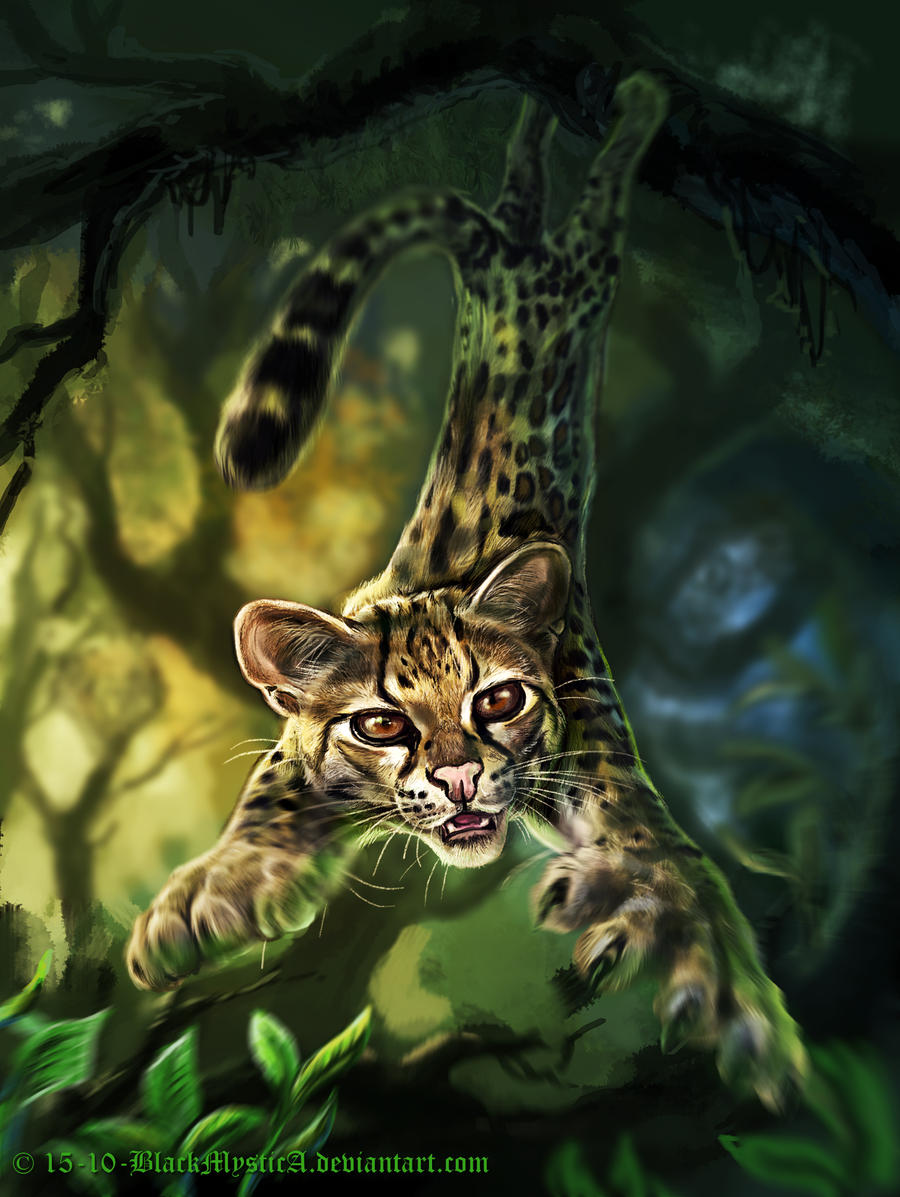Deviation Actions
Description
Finally a new drawing of my 'felidae' project. I'm not 100% content with the result; especially the colours and lighting but I see it as 'good enough'- I may correct some things later. I always tend to rush things...and then I'm too lazy to think about what I'm drawing...Anyway I thought of a pose typical for a margay; hanging upside down on their flexible hind feet.
The Margay
Leopardus weidii
*Description*
Margays are slender and agile small cats (approx. the size of a house cat with 2.6-4 kg)with a yellowish brown colour with dark brown or black open spots. The tail is long with a black tip. Margays look highly similar to significantly larger ocelot (L.pardalis) and the much smaller oncilla (L.tigrinus). Males and females are about the same size.
*Phylogeny*
Margays belong to the leopardus genus. They are closely related to oncillas, ocelots, kodkods, pampas cats and geoffroy’s cats.
*Distribution and habitat*
They live mainly in the rain forests in south-America. Also seen in the lowlands of Northern Mexico. They have a very arboreal lifestyle (living in trees) and prefer dense, primary tropical forests; from tropical dry to very humid tropical evergreen forests.
*Ecology and behaviour*
Margays are strictly nocturnal and rest always at daytime; always at least 7 meters off the ground. They are very agile and acrobatic climbers and hunters and develop these skills from a very young age. In contrast to most other cats; margays can rotate their hind feet inwards 180 degrees, making them able to hung upside down at branches. Another adaptation to an arboreal lifestyle is the broad, soft feet with mobile toes.
*Social organization*
Margays are solitary and occupy very large home ranges and margays probably live at much lower densities than ocelots. They mark their territory intensively.
*Reproduction*
Females come into heat when they are one year old, but usually breed when they are two or three years. They give birth to one single kitten; once every two years. The gestation time is longer than in most other small cats and the newborn kitten is relatively large. Kittens develop very fast to be able to follow the mother on arboreal hunting trips. The courtship behaviour is unique for felids; approaching males accompany vocalizations with rapid ritualized head-shaking movements.
*Diet*
Small, terrestrial and often arboreal and nocturnal prey. Mainly small rodents and birds, but also fruits and insects. In some cases they can even catch rabbits.
*Status in the wild*
Vulnerable, but population estimates are difficult to make. However, margays have been heavily hunted for their pelts but hunting is now mostly prohibited and the cats now have the status as endangered species.
All information comes from: M.Sunquist & F.Sunquist , Wild cats of the world. University of Chicago Press.
Art by me! Please don't copy/use it without my permission
AWESOME JOB !!!













![Shut Up, Rachael [PATREON REWARD]](https://images-wixmp-ed30a86b8c4ca887773594c2.wixmp.com/f/5a837a0e-fe1c-4e50-92e2-c8b7c6bd1c1c/ddqtwvu-42cad761-34b3-4641-ad63-240ac78d4199.jpg/v1/crop/w_184)




















